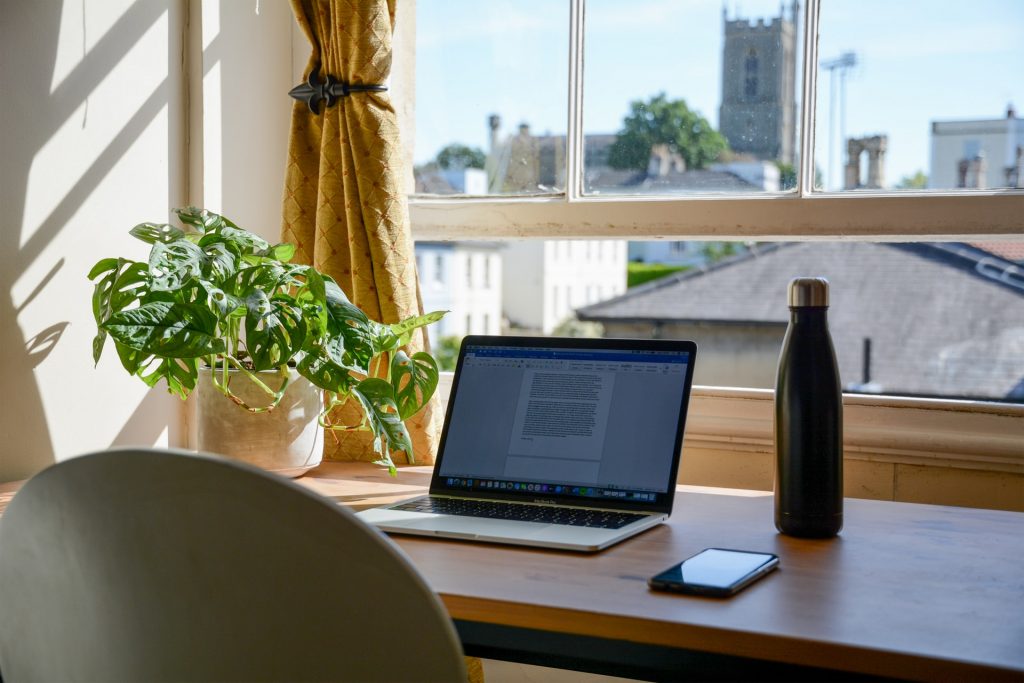
We are reader-supported. When you buy through links on our site, we may earn an affiliate commission.
There are many advantages to having your own home office. You’ll save on leasing shared office space, commuting to and from work and even on your wardrobe as you can dress differently at home than in a professional office setting. However, if your home office isn’t set up correctly, it can stymy your productivity and impact your overall work.
During the previous census, the government discovered nearly 12 percent of people work at home all the time. Remote work is more commonplace as people look for ways to reduce their carbon footprint and have a better work/life balance.
If you work from home, either for a company or as a freelancer, here are some design tips that will increase your home office productivity and show your bosses or clients why it’s the right move.
1. Dedicate a Space

If you live in a smaller home or apartment, it’s tempting to allocate a corner of your dining room table to work. However, the hub of your home may hold distractions that keep you from optimum speed. Even a cat knocking something off the table interrupts the flow of work.
Delivery people might ring your doorbell, or you might hear a noise outside in the hallway. Ideally, your home office has a separate room where you can shut the door and leave the outside world behind. At a minimum, find a closet or quiet corner you can convert into a desk space.
2. Set Work Hours

When you work from home, friends and family see it as you being available to chat 24/7. Those closest to you can be the worst about this. You must set work hour boundaries if you hope to finish your tasks for the day. Let everyone know you are unavailable between certain hours and then follow through by not answering your personal phone or the door.
Worried about an actual emergency? Tell family if something significant occurs, they can text you and you’ll ask for time off. However, stress it must be life or death and not a broken shoelace.
3. Ask Some Questions

Before you design your home office, ask some pertinent questions about your day-to-day routine. Do you need equipment for teleconferencing? If so, where will it go? Do you need a filing system, or will digital copies suffice? You’ll also want to think through where best to locate your desk.
If you have to get up a lot to meet with clients or move from room to room, it might be best to locate your desk near the entrance of your office. Perhaps you’d rather a view outside to give your eyes a break from the computer.
4. Paint the Walls

Scientists have known for a while that certain colors impact us on an emotional level. Many restaurants use orange and red because it triggers hunger signals and excitement. For high productivity, you want a color that isn’t distracting — but that doesn’t make you sleepy either.
Soft greens and gentle blues are soothing and don’t distract from the work at hand. Consider a dry erase paint, so you can jot notes directly on the wall. You can also create a stenciled calendar that shows you important work events for the week and tasks you need to complete.
5. Bring in Light

In a recent university study, investigators found office space with significant natural daylight reduced eyestrain by 84 percent. In addition, there was a 10 percent drop in drowsiness, creating more alert workers. Those who sat near natural light also saw a two percent bump in their productivity.
If your home office space doesn’t have a window and it isn’t in the budget to add one, get outside for a few minutes to take advantage of the sun’s rays. Some home workers set up a small workspace outside, so when the weather is nice they can spend part of their work hours outdoors.
6. Buy a Workstation

If you’re like most home-based workers, the majority of your day is spent sitting in front of a computer screen. This can cause eyestrain, backaches and stiff muscles. Invest in a comfortable ergonomic chair and a workstation that adjusts for sitting or standing.
When you start to get stiff in one position, you don’t have to stop work to stand for a bit. We recommend investing in a quality adjustable height desk, like this Flexispot electric standing desk available on Amazon.
You also want to make sure you have other comforts nearby so you don’t get distracted walking around your house getting what you need. Add a mini-fridge to keep snacks and water. Plus, you should include a comfortable couch or recliner where you can sit and brainstorm ideas.
Design Tips for Home Office Productivity
What motivates you to improve your productivity over time? Some people find motivational sayings and posters do the trick. Others like a view to the outside. Perhaps you enjoy listening to uplifting music.
Whatever helps you focus, add it to your workspace and keep striving for better productivity. Use trackers to see where you’re making improvements and look for ways to continuously improve your work environment.







